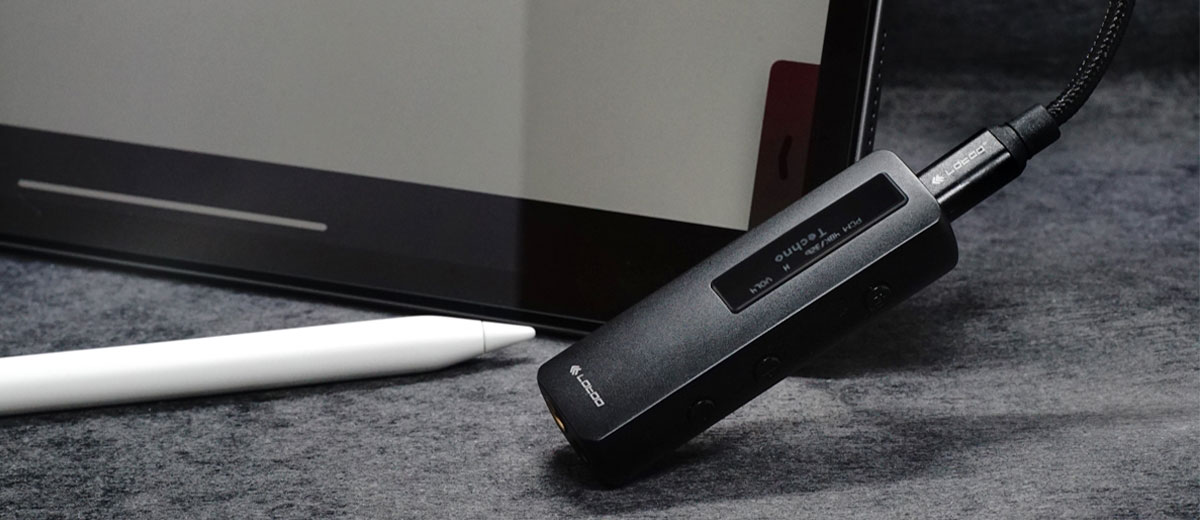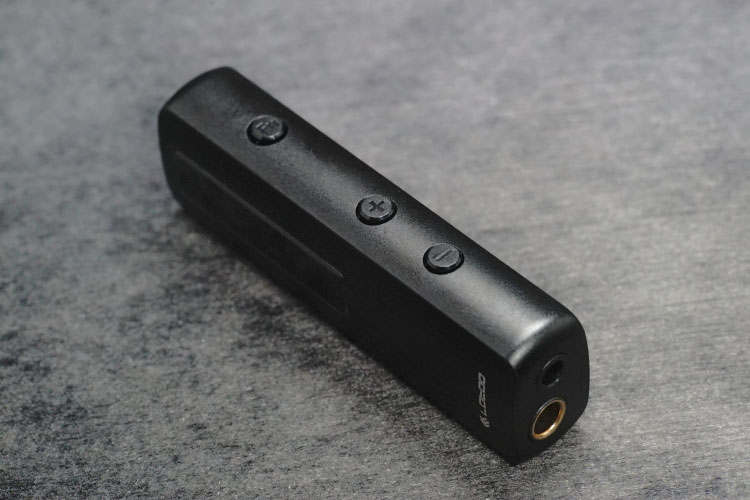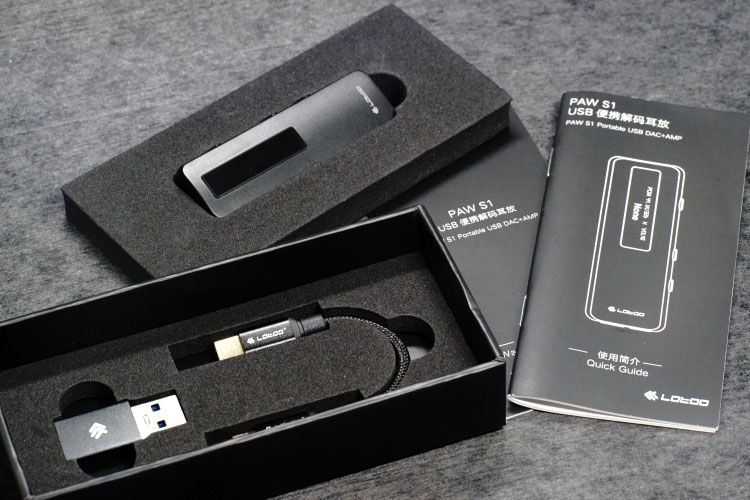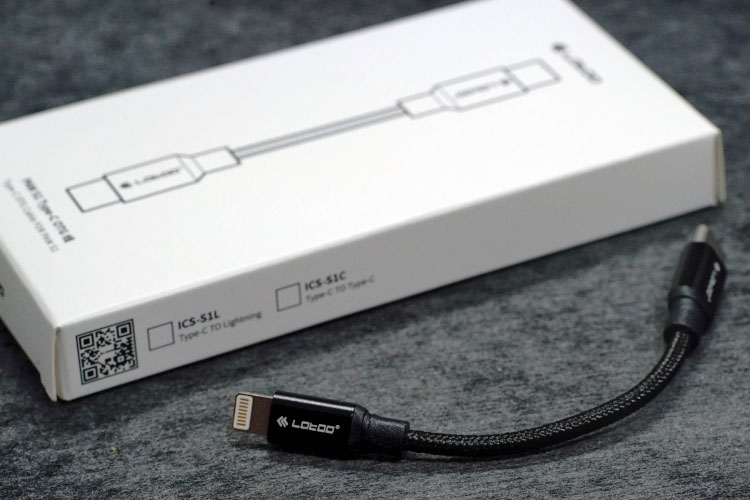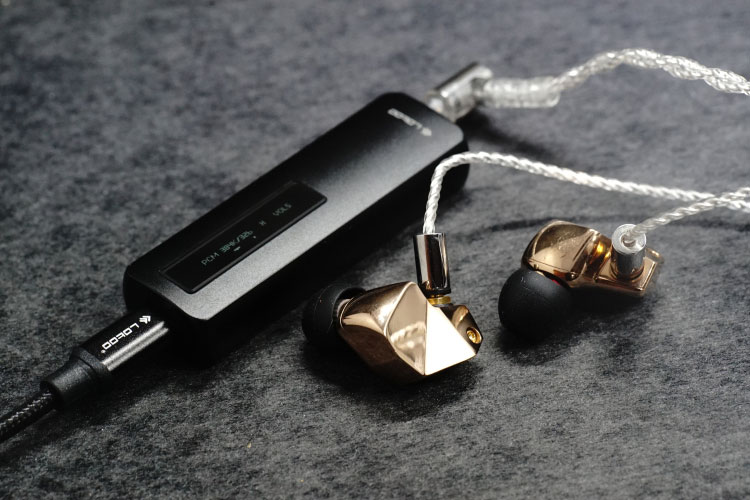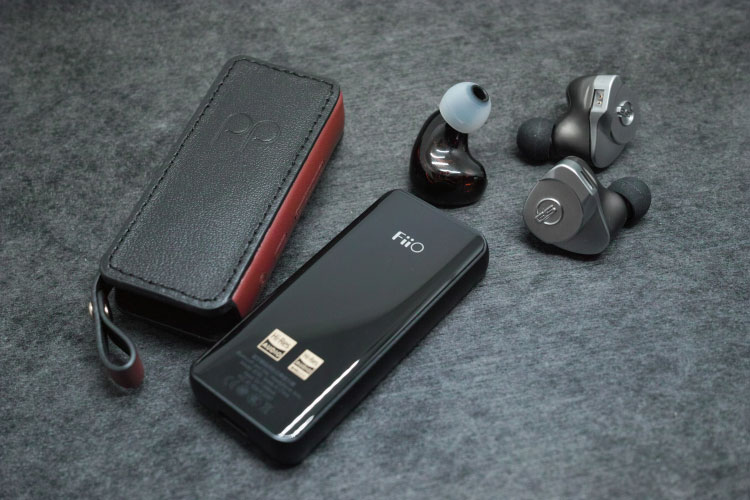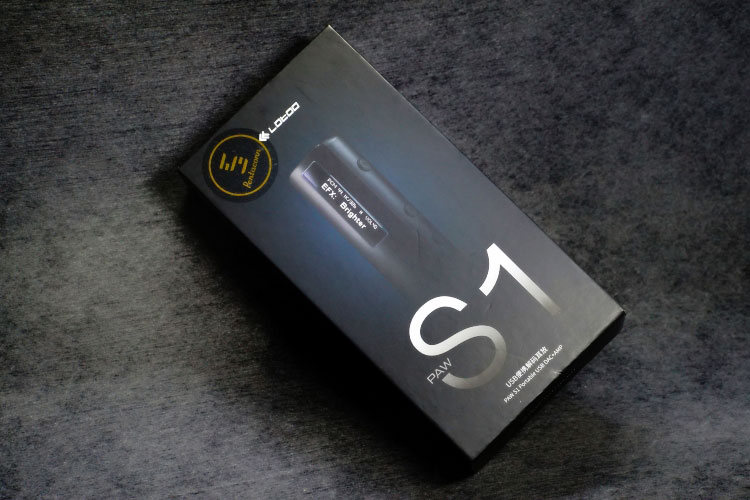The Lotoo PAW S1 is a new hi-res integrated portable amplifier and DAC dongle featuring PMEQ and up to PCM 32/384 and DSD 128 decoding. It is priced at $165.
Disclaimer: The Lotoo PAW S1 sent to us is a sample in exchange for our honest opinion. We thank the team at Lotoo for giving us this opportunity.
To read more about Lotoo products used on Headfonics click here.
Half a year ago Lotoo showcased a prototype of their PAW S1 and finally, in the middle of May, this USB-powered DAC-Amp dongle is ready after a lot of tweaks before mass production.
Industrially designed with an old-school monotone OLED screen encased, the PAW S1 is equipped with 4.4mm balanced output and Lotoo‘s PMEQ/ATE filters that make it the most functional USB powered DAC amp up to date.
The new device certainly looks well designed and built but could it be a DAP killer? Let’s find out!
The Pitch
Ever thinking of connecting your 4.4mm terminated IEMs to phone/PC for movies/ high-resolution music with a small DAC instead of using a DAP? Or, if you are looking for a wallet-friendly DAP replacement product that also works with your switch console as a bonus?
The Lotoo PAW S1 is a fantastic device that fits many of these requirements. It is designed to cater to the needs of audio hobbyists and enhance the daily multimedia experience. With a strong bias to filtering, the PAW S1 should offer a higher dynamic range when compared to common phones and laptops.
The PAW S1 also allows you to tweak the sound with its rich selection of DSP filters at the same time. The design is built around a low power consumption architecture to not drain your phone in the middle of the day.
Low power consumption
If you are experienced with USB powered devices you may be worried about the power consumption, which could be related to fidelity and decoding quality but still hamper your daily phone usage when the battery drains out in the middle of the day.
This is why Lotoo designed the PAW S1 for low power consumption and high output circuitry engineered in the same manner as a DAP. The PAW S1 reaches 70mW on single-end output and 120mW on the Pentaconn 4.4 balanced output respectively, with more than sufficient output power for many earphones.
Design
The body of the PAW S1 is finely CNC machined from aluminum blocks, weighing just slightly over 27g and is merely 13mm thick. The form factor is pretty similar to a card reader, or a big thumb drive.
On the bottom side, you will find a USB-C socket on one end and 3.5mm/4.4mm balanced jack made by Pentaconn Japan, the same as the ones you see on Lotoo’s higher-end DAPs.
One one side there is a small 1.2” LED screen which shows the current bit rate, gain mode, volume, and Filter selection. You can easily navigate with its buttons on the side and switch instantly between different equalizing filters and gain.
On the right side of the PAW S1, you will find an Fn and +/- buttons which allows you to trigger the control menu and switch between different gain and equalizing modes. There is no “back” button and you will be brought back to the main menu after a few secs if you don’t press any buttons.
The overall build quality is awesome and the feedback on the silicone patched buttons is great. The rounded design and stealthy black color theme are beautifully understated, while the finishing feels quite premium.
Hardware
Lotoo claims that the architecture on the PAW S1 is similar to a DAP, with a discrete power supply that helps achieve cleaner power management. The small dongle features an AKM4377 DAC chipset on an 8-layer PCB board supporting up to DSD128. If you stream on Tidal, MQA support will be enabled through a firmware update coming fairly soon.
Onboard there are AK8142 oscillators from AKM that help it to achieve a stunning 123dB S/N ratio on its single-ended output that breaks free of the limits of SRC conversion. The 4.4mm output has 122dB S/N and slightly more background noise but still within excellent control.
Android / iOS / iPad OS / Windows support
Android and iOS connections are instant with the USB-C and Lightning cable (separate purchase needed) and you will need to make sure your phone supports USB audio output. I recommend using the UAPP app on android for their USB driver support. For Windows users, the driver will be installed automatically and MacBook connection works right away too.
With some music applications, I am experiencing some lagging or sampling rate auto-selection problems so you may need to check the output settings if you hear cracks or altered sound. On my iPhone and Android, the PAW S1 works flawlessly with Apps that support USB sound output. Be reminded to turn the volume to 0 before earphone connection to avoid any damages.
Firmware
New device support is enabled through firmware updates and you could download the files from Lotoo’s website. You will need to hold down the FN button while plugging the PAW S1 into your PC and drag the new firmware file into the root folder of the device’s memory.
There are instructions inside the zip file downloaded from Lotoo’s site so you can follow the quick steps to update the device.
Gaming mode – UAC1
On the latest firmware, Lotoo has included a mode that works with Switch and all gamers are recommended to use this mode for gaming.
You will need to hold the (+) button while plugging it into your Switch console and upon successful connection, the screen will show UAC1. The same mode works for other consoles such as Xbox and Playstation as well as Windows 7/8/10 but the sampling rate will be limited to 16bit/48kHz.
Shielding from EMF
One bigger concern with DAC dongles is the potential interference or EMI from various signals including cellular data. With my iPhone/iPad air/PRO and Android devices, most of the time a silent background was achieved but if you put the dongle at the back of your phone you may hear the static / signal noises.
Packaging & Accessories
Coming in a small box the PAW S1 is packed like a Samsung mobile phone. Looking inside you will find a dual end USB Type-C cable and a full-size USB converter for PC. You could also find some user manuals placed underneath with instructions on the equalizing options. The iOS cables are a separate package that will allow you to connect to Apple devices.
Sound Impressions
Summary
With most devices I connected the PAW S1 to the background is clean, and there is more power in the output than the host device. Like the latest Lotoo DAPs, the PAW S1 has a clean tuning without compromising the fullness in the bass.
There is decent resolving power and good instrument separation but what impresses me the most is its PMEQ/ ATE functions. If you are experienced with Lotoo DAPs this is similar to the equalizing presets onboard. The PAW 1 packs in more than 16 preset that could help you change the sound signature on your IEMs fast and easily without altering the naturalness too much or causing unbearable distortion.
The 3.5mm output has similar driving power to the 4.4mm output, which seems to have a quieter background due to a balanced configuration. On both outputs the tonality is well balanced, mid-treble is clean and rounded with a small hint of warmth.
The vocal is satisfactorily separated and cleanly presented while the bass is on the forgiving side, not very textured and impactful but comfortable and dynamic, Staging is probably limited by power but the PMEQ presets could help tweak this.
Subjected to USB power limitations it is hard to compare the PAW S1 to a full-size DAP. The base tuning works quite well with different CIEMs/ sensitive earphones and it could easily outperform most phones.
PMEQ/ATE
DSP filtering is the core feature of the PAW S1. Compared to traditional equalizers the parametric equalization presets and ATE studio-quality filters can help reshape the sound signature very differently and effectively.
This means even if you are not familiar with parametric EQ or advanced tweaks, by switching between different modes you could instantly tweak the sound of your IEM. You can opt for a bassy beast, a clean analytical monitor, or to pushes out vocal details. They will emphasize some imaging aspects also to you hear clearer where the enemies come from in FPS shooting games.
The presets are fun to play with and works very well to make different media content more euphoric. To trigger the filters menu you need to press the top FN button. You could circulate between 16 PMEQ/ATE presets after the latest firmware update
Some of these presets such as the Dance filter will bring out more detail in the bass region. Whereas others will tweak the mid-lows and make the sound more forgiving. Some preset work in the opposite direction with a hotter treble.
The original “None” setting sounds the most natural and neutral to my ear. Other presets like Far-Field/ Near Field/ Game render an expanded soundstage. These effects sound vastly different from each other so you could have a lot of fun circulating between them.
Experience with different IEMs
I am using my PC and my Android phone’s output for the below test. With different IEMs, I tested the stock tuning is friendly with all genres of music, quite forgiving while being quite delicately tuned.
If your IEM is capable the PAW S1 PMEQ/ATE can make it sound very bright or very bassy without making creating a veil or increasing distortion. This is a practical feature to give you more sound options than just listening to the stock sound on your gears.
I do time to time tweak the equalizer in the apps but it is time-consuming and comparatively more limiting unless you are using more advanced software like Viper. If the IEM’s (and the Song’s) dynamic range can hold up to the tweaks there is a lot of room to reshape the sound. I just hope Lotoo will allow users to use their own tuning profiles.
Output Power
The PAW S1 responds to USB output power. You will notice the dynamics are stronger on more powerful USB outputs (PC/Laptop). Whereas on weaker sources such as an iPhone it will sound softer. This is possibly correlated to the output voltage that can be weaker on phones.
Synergy
Final A8000
I was in doubt thinking the PAW S1 with A8000 pairing won’t work well as Lotoo products tend to be clean and the A8000 is treble focused. Surprisingly it is quite a good match and the output quality is definitely better than on my phone’s output.
On the PAW S1, the A8000 sounds softer than on some DAPs, with less texture in the treble and more bass quantity. The overall sound is more forgiving than analytical.
With a more capable IEM, the PMEQ/ATE tweaks you can turn the A8000 to a really mid-bass intensive IEM with the Full Bass setting and I like how it sounds also with the Movie preset.
You may experience some harshness brought by the lifted treble peaks or overwhelming bass with some filtering modes, but there are sufficient filters out there to let you pick out 2-3 that works well with any IEMs.
The PMEQ options are quite useful especially if you have some older earphones/headphones you don’t commonly revisit because of overfamiliarity. Pairing them with the PAW S1 you can change its character by quite a large extent.
Ikko OH1
We reviewed the OH1 a good while earlier and it is one of the easier to drive hybrid IEMS with great dynamics and energy in the bass as well as a strong vocal performance for its price. The PAW S1 pairing offers good vocal clarity and a slightly V shape tuning with a rather slow decay. The synergy works great with pop and slow-paced instrumentals music.
Sub-bass is not huge and this also helps to keep the lower-mids clean from bloat. That boosted ~5k Hz area also injects more clarity to the top-end for this pairing. I found it hard to detect any unnatural sibilance when using the PAW S1 Classic filter so flute and violin work sounds pacy without being fragile or harsh.
With the Pop filter, there is more weight and control added to the slightly recessed mid-range. I have enjoyed this filter the most with electronic instruments with the stock PAW S1 sound setting working better for other genres.
Earsonics STARK
With the STARK I enjoy using the Brighter filter as it opens up the Starks relaxed top-end a bit more. At the same time, it stays quite relaxed with light vocals that do not steal your attention. This is ideal for casual listening rather than analytical performances.
On the PAW S1 stock tuning the bass has more presence, vocals sound fuller with an energetic upper treble performance contrasting nicely with the full mid-lows. Vocals sound pronounced and textured so raspy singers such as Axl Rose or Jon Bon Jovi or even fuller vocalists like Adele have a nice synergy.
The overall performance with the STARK is quite enjoyable and the filters provide a lot of flexibility. You can always find an option that fits the mood. The nuanced digital volume works very well also with sensitive IEMs like the STARK.
Selected comparisons
FiiO BTR5
The BTR5 is another balanced output equipped option in the same price range but packed with a different set of features. The BTR5 supports USB connection and Bluetooth connection, uses dual ES9218P chipsets for decoding while the Lotoo PAW S1 focuses on offering more filtering options to match different scenarios.
When putting them side by side both have a similar small black but well-designed dongle form factor. With a battery inside the BTR5 is superior in driving power and density in sound but you will have to stick to its stock tuning and limited filters.
The PAW S1 is battery-free and sounds more forgiving. You can instantly switch between modes to breathe life into different IEMs which gives it a bit more flexibility.
The experience with these two products is quite different. The PAW S1 is less traditional in purposing whereas the BTR5 has better power. If only the features from both could be merged it would be heavenly.
iBasso IT01
The IT01 is a lot lighter and cheaper but it does not support digital cable rolling. The build quality and features are far superior on the PAW S1 so also the decoding capability. The PAW S1 has a better resolution and power which in turn delivers a stronger dynamics range in high gain mode.
Our Verdict
The Lotoo PAW S1 is one of the cheapest 4.4mm output devices up to date with great portability, connectivity, and functionality.
There is more driving power than most phones and a higher gain option for more dynamics, while the PMEQ/ATE options are a great bonus to practically brushes up the experience with any audio content.
If you want to go light outdoor or getting bored with how your gears sound, the PAW S1 could be your rescue!
Lotoo PAW S1 Specifications
- Supported Format: PCM 32K-384KHz DSD64/DSD128
- Weight: 27.10g
- Size: 66mm*22mm*13mm
- Max Output: 3.5mm:70mW/ch @32Ω, 4.4mm:120mW/ch @32Ω
- HP Port: 3.5mm Unbalanced, 4.4mm Balanced
- Freq. range: 3.5mm: 20-20KHz..+0/-0.017dB
- 4.4mm: 20-20KHz..+0/-0.016dB
- USB Port: USB Type C
- Noise Level: 3.5mm: -118dBu, 4.4mm: -114dBu
- Screen: OLED 128×32
- THD+N.. Low gain: -106dB(0.0005%)
- High gain: -108dB(0.0004%)
- OS: LTOS
- S/N: 3.5mm: 123dB, 4.4mm: 122dB

